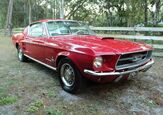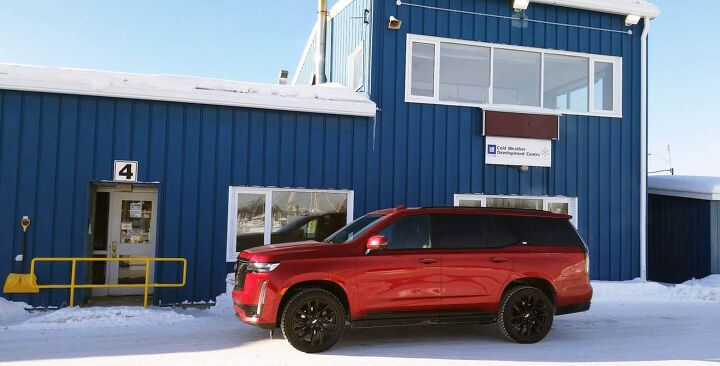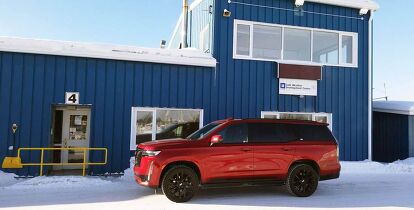GM's Kapuskasing Test Site Puts Cars Through a Sub-Zero Gauntlet

Every year, millions of North American drivers contend with snow and ice during the chilly winter months. It’s gruelling—but few of us put our cars through the challenges automakers do. To better illustrate the extreme-weather testing OEMs do, General Motors invited us to a virtual talk about its Kapuskasing, Ontario cold-weather testing facility, which has been in operation for nearly 50 years.
The General’s been in the area even longer, originally testing military vehicles in the town starting in 1941. A day’s worth of driving north of Ottawa, the 272-acre facility handles extreme-weather testing of almost every one of GM’s vehicles. Connor Sutton, engineering test leader at Kapuskasing, tells us around 95 percent of GM’s North American vehicles are tested at the Kapuskasing Proving Grounds. The only ones that miss it are ones where the development cycle doesn’t align with KPG’s busy season. One such example is the upcoming GMC Hummer EV.
A typical winter at Kapuskasing sees anywhere from 50 to 70 vehicles on site at any one time, with the primary testing season lasting three or four months. Vehicles undergo a rigorous 12-week test cycle, covering day and night, seven days a week. Even when they’re not driven, the cars are still being tested. They’re parked outside, where cold soak sets in as temperatures drop into the -40s—cold enough that exposed skin will immediately start losing sensitivity. If the weather isn’t cooperating, there are 30 cold storage cells on-site, capable of chilling vehicles to -49 degrees Fahrenheit (-45 C). Sutton emphasizes the importance of real-world testing however, noting that the freezers are very much a last resort.
SEE ALSO: 2021 Cadillac Escalade Review: Ghost ProtocolAt these temperatures, cars can reach their breaking points. “We’ve seen blown turbos, or gaskets completely leaking and cylinder walls actually destroyed,” says Sutton, explaining that thermal expansion and contraction play a big role. “Customers depend on vehicles to operate in cold weather,” he says, which is why the team focuses on the safety systems, cold starts, and doors opening during testing.
With GM’s move towards more EVs in the coming years, like the afore-mentioned Hummer as well as the new Bolt EUV, the team has had to adapt the center to handle EV cars.
SEE ALSO: 2020 Chevrolet Bolt EV Review“When we get the vehicles here we keep them on test as often as possible—on EVs that’s a challenge,” explains Sutton. With cold weather notoriously affecting EV range, Sutton says the team tests “more thoroughly for range and the affects of cold on [EVs] than ICE.”
Beyond that however, Sutton notes there isn’t much difference between ICE and EV testing, especially as charge times have come down. The Kapuskasing Proving Ground’s EV charging can pull in as much as 2.5 mW of electricity—the equivalent of running 1,500 homes. The goal, regardless of drivetrain, is to test durability, and to simulate what actual customers go through.
SEE ALSO: 2020 Cadillac CT5-V Review: My Name is My NameAs many as 50 people can be on-site at KPG during the winter, especially if there’s a specific focus for an engineering team. In warmer times, the crew shrinks down to as few as five. The Kapuskasing site includes a 2.5-mile (4.0-km) test track as well as a dedicated battery lab, which includes support for high-voltage EV battery packs. The latter will see quite a workout over the next few years, as every GM brand begins its rollout of various Ultium-powered EVs. The first few out of the block will include the Hummer EV and Cadillac Lyriq.
The far-north outpost together with campuses in Markham and Oshawa forms GM’s Canadian Technical Centre—the automaker’s largest development center outside of the US. Next winter, when your Chevy or GMC cranks to life without issue on the coldest day of the year, you can thank Sutton and the crew.
Become an AutoGuide insider. Get the latest from the automotive world first by subscribing to our newsletter here.

Kyle began his automotive obsession before he even started school, courtesy of a remote control Porsche and various LEGO sets. He later studied advertising and graphic design at Humber College, which led him to writing about cars (both real and digital). He is now a proud member of the Automobile Journalists Association of Canada (AJAC), where he was the Journalist of the Year runner-up for 2021.
More by Kyle Patrick




















































Comments
Join the conversation